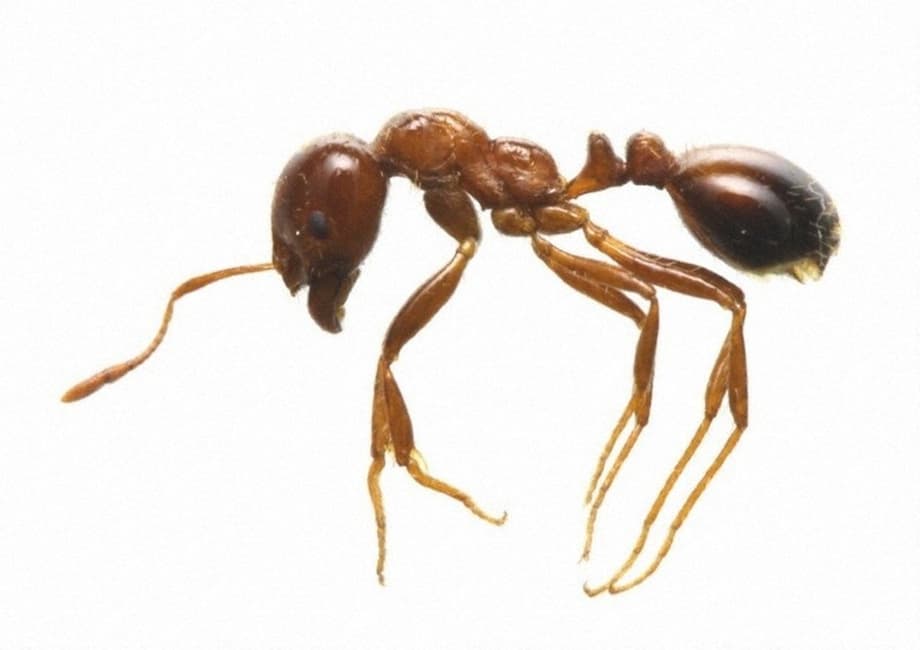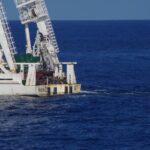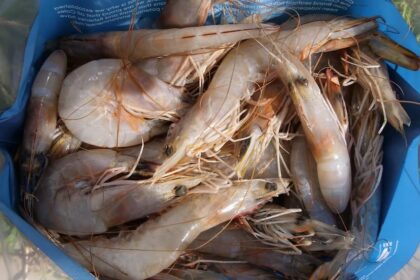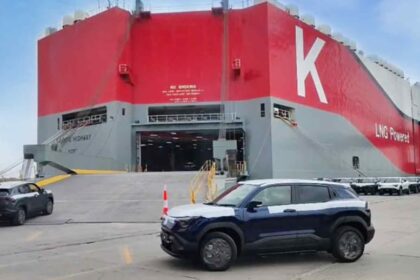Why this discovery matters now
Tokyo authorities have confirmed the largest find of red imported fire ants in the capital since surveillance began in 2017. More than 10,000 ants, along with at least 8,000 eggs, larvae and pupae, were discovered inside a busy container terminal at the Port of Tokyo. The discovery matters for two reasons. The number of ants is high, and the presence of brood shows that a functioning colony segment had traveled with cargo. That combination raises the stakes for rapid containment, because brood can seed new nests if even a small number of ants escape and establish in soil near the port.
- Why this discovery matters now
- What exactly was found at the port
- The threat fire ants pose to people and infrastructure
- How the ants keep arriving in Japan
- Are the ants becoming established in Japan
- What works to eradicate colonies
- The policy response at ports and across supply chains
- What residents and businesses should do now
- What to Know
The Tokyo Metropolitan Government said the first sign was about 40 ants on the roof of a container unloaded from a ship that had arrived from China. A targeted sweep then uncovered many more in two additional containers stored within the same Aomi terminal. Specialists confirmed the species as Solenopsis invicta, the red imported fire ant, an invasive alien species that requires urgent action under Japanese regulations. A coordinated operation began at once, with baiting and other control methods applied in and around the containers, followed by broad checks across the yard.
Officials from the metropolitan government and the Ministry of the Environment say pest control and monitoring will continue in the surrounding area to ensure no ants spread beyond the terminal. They are inspecting cracks, drainage lines and adjacent berths, and will repeat baiting if needed. There is no indication so far that the ants have moved beyond port property, but the scale of the find has triggered a higher alert across logistics hubs in the region.
What exactly was found at the port
Authorities counted more than 10,000 worker ants and identified at least 8,000 brood items, including eggs, larvae and pupae. The bulk of the insects were discovered after the initial group of 40 ants led to a broader inspection of nearby containers. Workers reported seeing ants carrying white brood, a sign that a colony fragment was on the move. Colonies sometimes relocate their brood when disturbed, when seeking better conditions or when transported inside cargo.
Where and how the ants were detected
The initial detection occurred during a routine inspection, which spotted several reddish ants moving along the roof of a container. The container had been unloaded from a vessel arriving from China. Experts were called, specimens were collected, and the ants were identified as red imported fire ants. That early confirmation triggered a structured search of adjacent containers, pallets and the pavement immediately around the stacks. Inspectors then found large numbers of workers and brood inside two additional containers stored within the same terminal area.
Immediate response on site
After confirmation, the terminal isolated the affected units and restricted handling. Crews laid insecticidal bait around the container bases, on interior ledges and near likely exit points. Ground teams expanded the perimeter with additional baiting and monitoring cards, then treated cracks and sheltered spots near the stacks. The goal was to get foraging ants to carry toxic bait back into any hidden nest material and to block outward movement. Collected specimens and waste were secured for safe disposal. The government indicated that detailed surveys of the yard surface, drains and nearby berths will continue until traps and visual checks show no further activity.
The threat fire ants pose to people and infrastructure
Red imported fire ants are small, tough and highly adaptable. Workers are typically 2 to 6 millimeters long, reddish brown with a darker abdomen, and they build extensive nests in soil and manmade structures. They defend those nests aggressively. When disturbed, ants swarm and sting. Stings produce a burning sensation and a fluid filled blister. For some people, a sting can trigger a serious allergic reaction. Medical authorities overseas have documented cases of anaphylaxis, and rare fatalities have been recorded among vulnerable individuals such as infants and the elderly.
The hazards extend beyond health. Fire ants damage agriculture, parks and infrastructure. They chew through insulation and wiring, short electrical systems, invade traffic boxes and damage equipment. Mounds can undermine lawns, sports fields and riverbanks. In the United States, where the species is well established, about 14 million people are stung each year. Economic losses from medical treatment, control work and damage run into the billions. Estimates cited by Japanese experts put the annual cost in the United States at up to 780 billion yen, roughly 6.7 billion dollars.
Ecologically, the ants are a major competitor to native insects. They hunt small animals, reduce biodiversity and can disrupt ground nesting birds. In urban areas, they are attracted to oily and sweet foods, including leftovers in parks and near riverside recreation spots, which can increase encounters with people. The combination of public health risk, infrastructure damage and ecological harm is what has Japanese authorities on guard whenever the species is detected at a port.
How the ants keep arriving in Japan
Global trade has created the pathway. Fire ants reach new countries in cargo, especially inside containers and machinery that offer shelter and warmth. Japan recorded its first detections in 2017 at major ports including Kobe, Osaka and Nagoya. Since then, inspectors have found colonies or small groups of ants at ports across the country, including Tokyo. Shipping lines that call at East and Southeast Asian ports are the primary route into Japan, and inspections often trace back to vessels that have loaded at multiple terminals abroad before arriving in Tokyo Bay or other Japanese harbors.
Cases in recent years show how easily a colony can travel. Earlier this year, authorities eradicated a nest of more than 1,000 worker ants and at least 20 queens found in an empty container at Yokohama, after that container had first been unloaded at Tokyo and then moved. A single mated queen can lay extraordinary numbers of eggs, up to around 1,600 per day under optimal conditions, which means even a brief delay in detection can allow a small group to begin building a new nest if it reaches suitable ground.
Experts who track invasive species have repeatedly warned that interceptions will remain frequent as long as ants are present in overseas ports and cargo holds. Dr Koichi Goka, who heads the Invasive Species Research Team at the National Institute for Environmental Studies, has been monitoring the trend and its frequency.
There is no question that this is becoming a bigger problem every year. The first fire ants were found in cargo in 2017 and since then, virtually every month another colony is discovered at a port somewhere in Japan. To date, there have been 110 cases reported, but we have been fortunate to find them and quickly eradicate these colonies.
The churn of international shipping means any port can be affected. That is why officials stress rapid reporting by terminal operators and importers, as well as systematic baiting, trapping and visual checks at container yards, ferry terminals and warehouses.
Are the ants becoming established in Japan
Japan remains in a containment phase, with the majority of finds still inside or adjacent to port facilities. Authorities have moved quickly to eradicate each detection so far, which is why no large established population has been reported in cities. Even so, isolated inland finds have been noted in past years, including near Nagoya, and researchers caution that one full reproductive season in a suitable microclimate could be enough for ants to gain a foothold beyond a wharf.
Establishment would mean more than a transient presence in cargo. It would require queens and brood in soil, sustained reproduction and the production of new queens. That is what countries such as the United States and Australia have experienced, and it is what Japanese officials are working to prevent. Warmer winters in parts of Japan could widen the window for survival, although cold snaps still limit the species in many regions. Vigilant inspection and fast treatment remain the best tools to keep the insects from crossing that line.
Tokyo’s latest case shows both sides of the challenge. On one hand, surveillance worked, and a large colony fragment was detected and treated before it could disperse. On the other, the presence of abundant brood inside containers illustrates how readily fire ants can move across oceans and arrive in condition to restart a nest if they find suitable ground.
What works to eradicate colonies
Scientific studies and field programs point to bait based control as the most reliable way to eliminate colonies of red imported fire ants. Baits combine a food attractant with a slow acting toxicant that workers carry back to the nest and share with queens and larvae. When the queen dies and brood production stops, the colony collapses. Among available agents, fipronil stands out for high potency at low doses, which makes it effective for colony level control when used appropriately. Thiamethoxam has also shown good performance in tests. Agents such as indoxacarb and imidacloprid can work under some conditions, while hydramethylnon has shown limited effect in acute trials.
Sprays that contain quick acting pyrethroids can knock down workers rapidly, which helps protect people and crews on site. However, lab results indicate that some ants can recover from temporary paralysis if exposure is brief. That is why responders often pair a quick knockdown at the surface with a bait that reaches the queen and brood underground. The choice of product and timing depends on site conditions, temperature and the need to limit disruption to port operations.
Why baits are essential for colony collapse
Fire ant societies revolve around queens and brood. Killing foraging workers alone usually does not end the problem, because new workers emerge from pupae and the queen keeps laying eggs. Baiting exploits ant food sharing behavior, known as trophallaxis. Workers carry bait into the nest, feed it to larvae and queens, and the entire colony begins to fail. Field experience shows that well planned bait placement, followed by follow up monitoring, is central to clearing a site rather than simply pushing ants to a nearby patch of soil.
Minimizing harm to other species
Even effective agents can harm non target insects if used carelessly. That is why professional teams place bait in confined areas, avoid broadcast applications in sensitive habitats and return for repeated checks rather than oversaturating a site. Environmental managers also consider insect growth regulators for some scenarios, and they use physical barriers and sanitation to reduce attractants. The goal is to eliminate the invader while keeping collateral effects as low as possible.
The policy response at ports and across supply chains
Tokyo’s latest eradication effort sits within a broader national campaign. Japan’s invasive alien species rules already allow rapid action at ports, but the government has also discussed revisions that would expand powers to investigate, disinfect or dispose of cargo suspected of carrying fire ants. Proposed steps include clearer duties for importers, faster reporting to authorities and formal guidelines for decontamination. Officials also encourage exporters overseas to treat and clean containers before loading, since the most efficient interception is one that happens before a ship leaves port.
International coordination is part of the strategy. Japanese authorities have advocated for stronger container hygiene standards in global forums so that exporting terminals apply consistent cleaning and inspection practices. Moves toward shared protocols would reduce the chance that ants nest in the undercarriages of machinery or inside boxes that sit for days in warm yards.
On the home front, monitoring has widened beyond ports. Railway freight hubs and large warehouses deploy traps and carry out visual checks. Municipal officials have expanded public education campaigns, and staff in schools and childcare facilities are being trained to recognize fire ants and report suspected sightings. These steps do not eliminate risk at the border, but they shorten the time between arrival and detection, which is often the difference between a contained incident and a costly spread.
What residents and businesses should do now
Most people in Tokyo will never encounter fire ants, and officials stress that the current incident is confined to a port terminal. Even so, vigilance helps. Residents, port workers and logistics firms can reduce risk with basic hygiene, simple safety steps and clear reporting lines. The following guidance reflects practices used in countries that deal with the species.
- If you see a cluster of small reddish ants that sting and form a mound or swarm aggressively when disturbed, do not touch them with bare hands. Take a clear photo from a safe distance.
- Report suspected fire ants to local authorities or the metropolitan government hotline. Provide the location, time and a photo if possible. Do not move soil, pallets or containers from the area.
- At ports and warehouses, keep cargo areas clean. Remove food waste promptly and store attractants, including sweet drinks and oily foods, in sealed bins.
- For businesses that handle imported containers, consider a receiving protocol that includes visual checks of roofs, door gaskets and flooring, and place bait stations in high risk zones.
- If stung, wash the area with soap and water. Apply a cold pack to reduce pain and swelling. Seek urgent medical help if you develop hives, breathing difficulty, dizziness or swelling of the face or throat.
- Do not apply household insecticides indiscriminately. Incorrect treatment can scatter ants and make professional eradication more difficult. Wait for trained teams to assess and treat the area.
What to Know
- More than 10,000 red imported fire ants, plus at least 8,000 eggs, larvae and pupae, were found at Tokyo’s Aomi container terminal, the largest discovery in the capital since 2017.
- An initial group of about 40 ants on the roof of a container from China led inspectors to two more containers holding large numbers of workers carrying brood.
- Authorities isolated the units and deployed bait and other control methods, with continued surveys across the surrounding yard to prevent any spread beyond the terminal.
- Fire ants can inflict painful stings and trigger allergic reactions. The species also damages infrastructure and agriculture and has caused multibillion dollar losses in the United States.
- Japan has intercepted fire ants at ports since 2017. Cases appear frequently, often linked to shipping containers, and rapid eradication has prevented wider establishment so far.
- Scientific evidence supports bait based eradication aimed at killing queens and brood. Fipronil baits are especially potent when used by trained teams with care for non target species.
- Government measures include stronger inspections, proposed legal tools to investigate or disinfect cargo and efforts to promote container cleaning standards with international partners.
- Residents and businesses can help by reporting suspected ants, avoiding contact, managing food waste and allowing trained teams to carry out targeted treatments.












